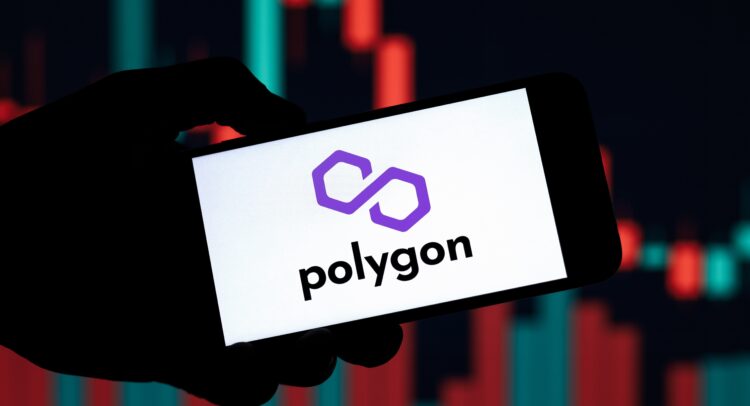In recent years, the cryptocurrency and blockchain space has witnessed rapid growth and expansion, with many new projects and platforms emerging to address various challenges and opportunities. One such project, which has gained significant attention and adoption, is Polygon. In this comprehensive analysis, we will explore the world of Polygon, its origins, purpose, underlying technology, use cases, and potential future developments.
Origins of Polygon
Polygon, previously known as the Matic Network, was founded by Jaynti Kanani, Sandeep Nailwal, and Anurag Arjun in 2017. The project initially aimed to improve the scalability and usability of the Ethereum blockchain through the development of a Layer 2 scaling solution. However, as the project evolved, it rebranded to Polygon in February 2021, with an expanded vision to create a multi-chain ecosystem for Ethereum-compatible blockchains.
The Purpose of Polygon
The primary objective of Polygon is to address the scalability, throughput, and high gas fee issues associated with the Ethereum network. Ethereum, being the most widely adopted smart contract platform, has faced congestion and slow transaction processing times due to its limited capacity. Polygon aims to provide a solution to these problems by offering a scalable, secure, and user-friendly infrastructure for developers to build and deploy decentralized applications (dApps) on Ethereum-compatible blockchains.
Polygon’s Underlying Technology
Polygon’s technology stack consists of several components designed to facilitate the creation and interaction of Ethereum-compatible blockchains. These components include:
Polygon SDK: A modular and extensible framework that allows developers to create and deploy their custom Ethereum-compatible blockchains with ease.
Ethereum Layer 2 Solutions: Polygon incorporates various Layer 2 scaling solutions such as Plasma, zkRollups, and Optimistic Rollups to enhance the throughput and efficiency of the Ethereum network.
Proof-of-Stake (PoS) Consensus: Polygon employs a PoS consensus mechanism for its native MATIC token, which is used for transaction fees and staking on the network.
Interoperability: Polygon enables seamless communication between different Ethereum-compatible blockchains, allowing assets and information to be easily transferred between them.
The Role of the MATIC Token
The native token of the Polygon network is MATIC, which serves several critical functions within the ecosystem:
Security: The PoS consensus mechanism relies on users staking their MATIC tokens to validate transactions and secure the network.
Governance: MATIC token holders can participate in the governance of the Polygon ecosystem, allowing them to influence decisions and future developments.
Transaction Fees: Users are required to pay transaction fees in MATIC when interacting with the Polygon network.
Incentives: Developers and users can earn MATIC tokens as rewards for contributing to the network, such as running validator nodes or participating in liquidity provision.
Use Cases for Polygon
Polygon’s scalable and interoperable infrastructure has attracted numerous developers and projects, leading to various use cases, including:
Decentralized Finance (DeFi): Polygon has emerged as a popular platform for DeFi projects seeking to leverage its improved scalability and lower transaction fees. Popular DeFi projects built on Polygon include Aave, SushiSwap, and Curve Finance.
Non-Fungible Tokens (NFTs): The reduced costs and faster transaction times on Polygon make it an attractive platform for NFT projects and marketplaces. Notable NFT projects on Polygon include OpenSea, Decentraland, and Rarible.
Gaming: Polygon’s ability to handle a high volume of transactions makes it well-suited for blockchain-based gaming platforms that require real-time interactions and low latency. Examples of gaming projects on Polygon include Cometh and Chain Guardians.
Decentralized Autonomous Organizations (DAOs): Polygon’s interoperable infrastructure and scalability features facilitate the development of DAOs, which are decentralized organizations governed by smart contracts. Examples of DAOs on Polygon include DAOstack and Aragon.
Enterprise Solutions: Polygon’s high throughput and low transaction fees make it an attractive option for businesses seeking to integrate blockchain technology into their operations. Some enterprises leveraging Polygon include Trace Network and Infosys.
Partnerships and Integrations
Polygon’s growth and adoption have been further accelerated by numerous partnerships and integrations with various projects, platforms, and organizations in the blockchain and cryptocurrency space. Some notable partnerships and integrations include:
Chainlink: Polygon has integrated Chainlink’s decentralized oracle network, enabling developers to access secure and reliable off-chain data for their dApps.
Binance Smart Chain: Polygon has established a cross-chain bridge with Binance Smart Chain, facilitating the seamless transfer of assets between the two ecosystems.
Filecoin: Polygon has partnered with Filecoin to enable decentralized storage solutions for dApps built on its platform.
Coinbase: MATIC, the native token of Polygon, is listed and supported on Coinbase, one of the largest cryptocurrency exchanges in the world.
Future Developments and Potential Impact on the Blockchain Ecosystem
As the blockchain ecosystem continues to evolve, Polygon is well-positioned to play a crucial role in shaping its future. Some potential future developments and impacts include:
Continued Growth of DeFi and NFTs: As DeFi and NFT sectors continue to grow, Polygon’s scalable and interoperable infrastructure will likely attract more developers and projects seeking to leverage its advantages.
Expansion of the Multi-Chain Ecosystem: With the rise of alternative smart contract platforms and Layer 2 solutions, the demand for interoperability between these networks will increase. Polygon’s focus on facilitating seamless communication between Ethereum-compatible blockchains could contribute to a more interconnected and efficient multi-chain ecosystem.
Layer 2 Scaling Solution for Ethereum 2.0: As Ethereum transitions to Ethereum 2.0, incorporating sharding and Proof-of-Stake consensus, there may be opportunities for Polygon to provide additional Layer 2 scaling solutions to further enhance the network’s performance.
Increased Adoption by Enterprises: As more businesses explore the potential of blockchain technology, Polygon’s scalable and user-friendly infrastructure could attract enterprises seeking to integrate blockchain into their operations.
Conclusion
In conclusion, Polygon has emerged as a powerful and versatile platform addressing the scalability, throughput, and interoperability challenges faced by the Ethereum network. Through its comprehensive technology stack and growing ecosystem of developers, projects, and partners, Polygon is well-positioned to play a crucial role in the future development of the blockchain and cryptocurrency space. With its focus on creating a multi-chain ecosystem for Ethereum-compatible blockchains and fostering seamless communication between them, Polygon has the potential to contribute significantly to the growth and adoption of blockchain technology across various sectors, from DeFi and NFTs to gaming and enterprise solutions.






